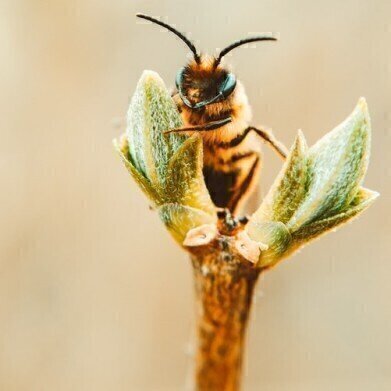Gas Chromatography
What is Africa Oldest Sweetener? - Chromatography Explores
Apr 29 2021
Long before we started cultivating sugar cane or sugar beet, what did prehistoric man or woman use to satisfy their sweet tooth? The answer is likely that honey was prehistoric man’s oldest sweetener. Indeed, it is likely that honey was the only sweetener that humankind had access to for thousands of years.
There is evidence about the importance of bees and bee products in many cultures from prehistoric petroglyphs created 8000-40000 years ago to Ancient Egyptian reliefs that indicate bees were kept domestically 2600BCE. A recent paper published in Nature Communications reports on work carried out to identify the first evidence of domestic beekeeping in sub-Saharan Africa. Did chromatography create a buzz in discovering Africa’s earliest beekeepers?
The Nok – from central Nigeria
In a study headed by Goethe University scientists, researchers have been studying the Nok culture for over twelve years. The Nok culture dates between 1500BCE and the beginning of the Common Era and is based in central Nigeria. The culture is primarily known for its elaborate clay sculptures which represent the oldest figurative art in Africa.
The study carried out by the Goethe University scientists has examined all aspects of the archaeology including the settlement pattern and the meaning of the terracotta sculptures, through to subsistence and diet. Diet is usually studied by analysing the animal bones found in the excavations, but the acidic soil means not many bones remain. So, the team turned to the clay pots they found.
Gas chromatography reveals potteries secrets
Molecular food residues in clay pots from processed plant and animal products are relatively stable, especially the fatty acids or lipids which form stable compounds. Previous research suggests that lipid residues are preserved in porous pots for thousands of years. Along with chemists from the University of Bristol they analysed the pottery shards for fatty acid deposits.
Using gas chromatography, the team analysed the shards, and to their surprise they found numerous components that expanded the existing knowledge base regarding the diet of the Nok people. The use of gas chromatography is discussed in the article, Gas Chromatography Troubleshooting Part I – Peak Shape Issues.
One of the creatures that really surprised the researchers was the humble honeybee. In fact, a third of the pottery shards that were analysed contained high-molecular weight lipids that are typical of beeswax. Peter Breunig from Goethe University said in a press release “That honey was part of their daily menu was completely unexpected, and unique in the early history of Africa until now.” Africa’s first sweetener?
Could the pottery shards from other archaeological excavations reveal their secrets through the power of gas chromatography?
Digital Edition
Chromatography Today - Buyers' Guide 2022
October 2023
In This Edition Modern & Practical Applications - Accelerating ADC Development with Mass Spectrometry - Implementing High-Resolution Ion Mobility into Peptide Mapping Workflows Chromatogr...
View all digital editions
Events
Apr 23 2024 Kintex, South Korea
Apr 23 2024 Seoul, South Korea
Apr 28 2024 Montreal, Quebec, Canada
May 05 2024 Seville, Spain
May 15 2024 Birmingham, UK













